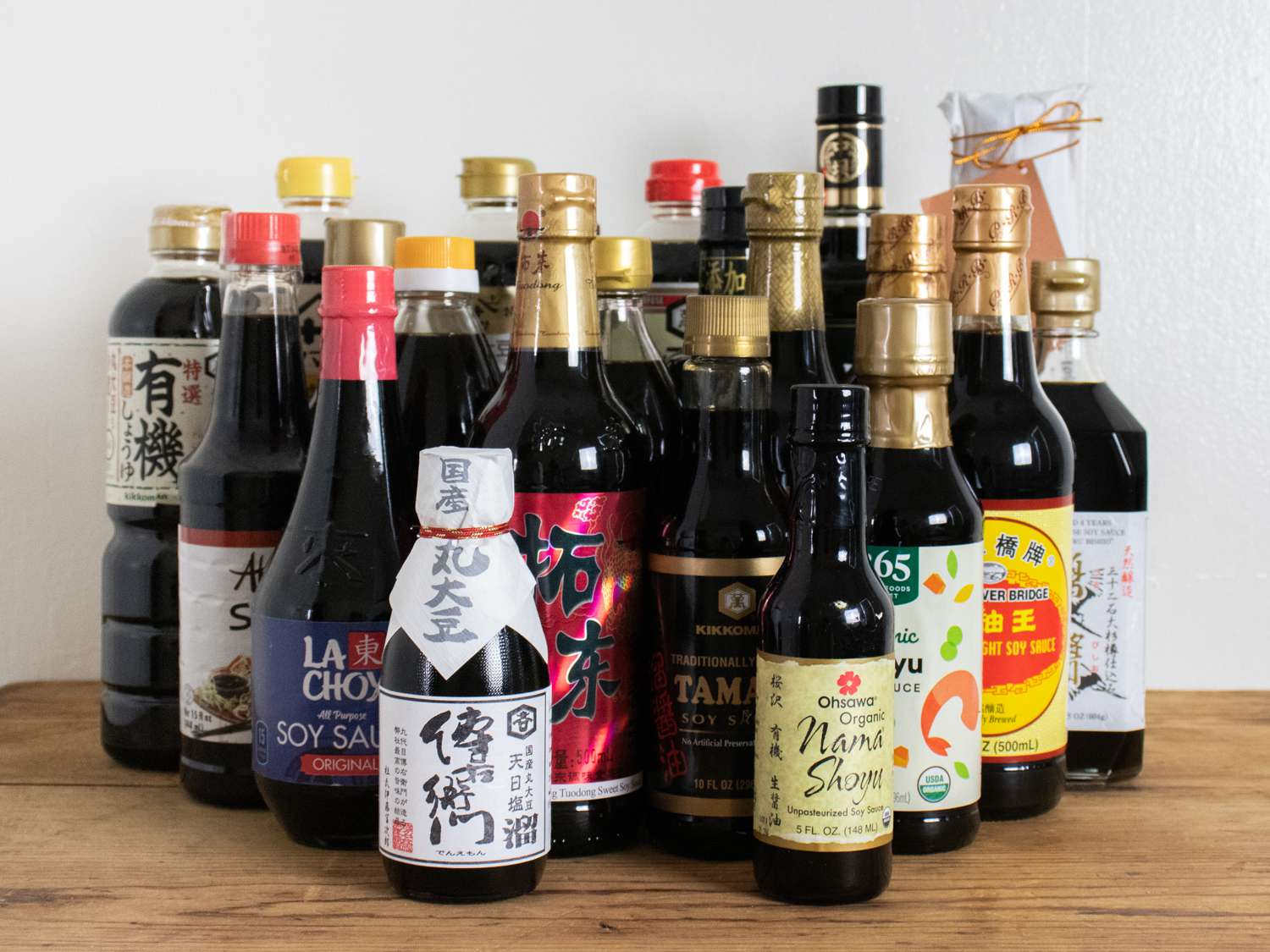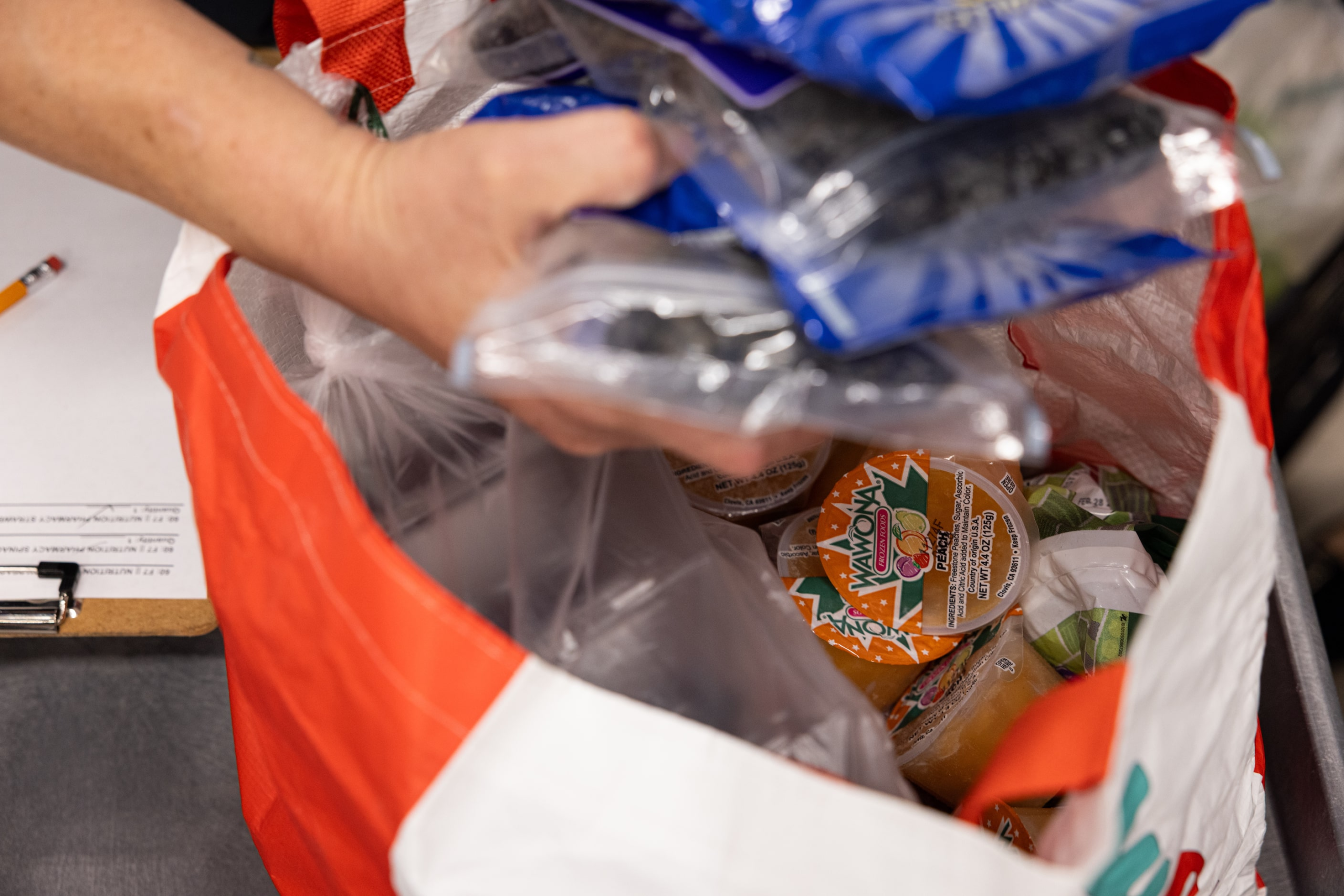In recent years, a fascinating culinary phenomenon has quietly taken root in kitchens far beyond Japan’s borders: the proliferation of Japanese restaurant sauces designed specifically for at-home use. This trend, which might seem on the surface a simple matter of convenience or flavor enhancement, actually reflects a broader cultural and economic shift that intertwines globalization, changing consumer habits, and a renewed appreciation for authenticity in food. Japanese sauces—ranging from the deeply umami-rich ponzu to the subtly sweet and savory teriyaki, and the complex layers of miso-based dressings—have long been staples in restaurant kitchens. Yet, their transition into the domestic sphere signals not only a democratization of gourmet flavors but also a nuanced redefinition of what it means to cook and eat Japanese food in a global context.
The surge in availability and popularity of these sauces can be traced to multiple intersecting factors. On one hand, the rise of Japanese cuisine internationally has been well documented, with sushi and ramen becoming ubiquitous in metropolitan food scenes worldwide. However, as the pandemic shuttered restaurants and forced many to cook at home, consumers began seeking ways to replicate the flavors they craved without the usual dining-out experience. This shift accelerated the demand for authentic, ready-made sauces that could elevate home-cooked meals with minimal effort. Moreover, these sauces often carry the imprimatur of well-known Japanese chefs or brands, lending an air of credibility and quality that appeals to discerning home cooks eager to experiment without the steep learning curve traditionally associated with Japanese cooking.
Yet, this trend is not without its complexities. The commodification of Japanese sauces for global markets raises questions about cultural appropriation and authenticity. While many of these products are made in Japan or under Japanese supervision, others are manufactured abroad, sometimes altering recipes to suit local palates or cost constraints. This tension between authenticity and adaptation reflects a broader dialogue about globalization’s impact on culinary traditions. For instance, a soy-based sauce produced in the United States might have a different saltiness or sweetness profile than one crafted in Kyoto, prompting debates among food purists and casual consumers alike. The history of soy sauce itself is a testament to centuries of evolution and regional variation, underscoring how fluid and dynamic food cultures can be.

In the context of food policy and international trade, the surge in demand for Japanese sauces dovetails with broader shifts in global food supply chains and regulatory frameworks. For example, the import and export of food products such as miso, dashi concentrates, and fermented sauces are influenced by standards set by organizations like the Codex Alimentarius, which ensures safety and quality while facilitating international trade. These regulations can impact everything from labeling to ingredient sourcing, shaping not only what reaches consumers’ shelves but also how these products are marketed. Furthermore, the growing interest in fermented foods, recognized for their health benefits, has positioned Japanese sauces at the intersection of culinary tradition and modern wellness trends, adding layers of appeal that transcend mere taste.
The cultural ramifications extend beyond economics and health. The embrace of Japanese sauces at home signals an evolving relationship with food as a medium of cultural exchange and identity formation. In many households, these sauces serve as a gateway to exploring Japanese culinary arts, sparking curiosity about other elements like dashi stocks or seasonal ingredients. This phenomenon mirrors historical patterns observed in other ethnic cuisines, where immigrant communities and food entrepreneurs introduce native flavors that gradually permeate mainstream diets. However, the current wave is distinctly shaped by digital media, where cooking influencers and recipe-sharing platforms amplify these trends, facilitating a global conversation about taste and tradition.

Looking ahead, the trajectory of at-home Japanese restaurant sauces will likely continue to reflect broader societal and technological currents. As consumers become increasingly conscious of sustainability and ethical sourcing, there may be growing demand for transparency about ingredient origins and production methods. Innovations in packaging and preservation might extend shelf life and reduce waste, aligning with environmental goals. On the culinary front, we may see hybrid sauces that fuse Japanese techniques with local flavors, further blurring the lines between tradition and innovation.
Ultimately, the rise of Japanese restaurant sauces for home use encapsulates more than just a taste preference; it reveals how food acts as a living, evolving cultural artifact. It bridges continents and generations, inviting both reverence for heritage and enthusiasm for creative adaptation. As we navigate these changes, it’s worth reflecting on the ways in which such culinary shifts mirror larger patterns of globalization and identity. The humble bottle of ponzu or teriyaki on your kitchen shelf is, in a sense, a microcosm of a world increasingly connected through shared flavors and stories.
As the cultural exchange embedded in at-home Japanese restaurant sauces deepens, so too does the dialogue around authenticity and adaptation. The tension between preserving traditional recipes and embracing innovation is palpable in kitchens worldwide, where cooks experiment with ingredients like yuzu kosho or shichimi togarashi, melding them with local produce to create new flavor profiles. This culinary hybridity raises intriguing questions about what it means for a sauce—or any dish—to be authentically Japanese. Is authenticity rooted in strict adherence to historical methods, or can it evolve organically as it interacts with global palates? This debate echoes broader conversations in the culinary world about cultural appropriation versus appreciation, especially as Japanese cuisine’s international popularity surges and inspires countless reinterpretations.
The narrative of these sauces also intersects with the rise of DIY culture and foodie communities that value transparency and craftsmanship. Social media platforms have become fertile grounds for sharing homemade sauce recipes, tips for perfecting umami balance, and even critiques of mass-produced brands. These digital spaces foster a democratization of culinary knowledge, empowering home cooks to engage with Japanese flavors on their own terms. Moreover, this trend dovetails with a renewed interest in fermentation and preservation techniques, long staples of Japanese cooking, that offer both health benefits and complex tastes. As such, the humble sauce bottle becomes a gateway to deeper culinary exploration and education.
Looking ahead, technology’s role in shaping the future of these sauces cannot be underestimated. Advances in food science, such as precision fermentation and bioengineering, could revolutionize how key ingredients like soy sauce or miso are produced, potentially reducing environmental impact while enhancing flavor consistency. Meanwhile, augmented reality and smart kitchen appliances might soon provide interactive guidance for sauce pairing and preparation, making the experience even more accessible and personalized. These innovations suggest a future where traditional Japanese sauces are not just preserved but dynamically reimagined, blending craftsmanship with cutting-edge science.
Yet, amid all this change, the emotional and cultural resonance of Japanese sauces remains steadfast. They carry stories of family meals, regional pride, and the artistry of chefs who have honed their craft over generations. Whether poured over a simple bowl of rice or used as a glaze for an elaborate dish, these sauces evoke a sense of connection—to place, to history, and to community. In a world that often feels fragmented, such culinary touchstones offer comforting continuity and a shared language that transcends borders.

In this evolving landscape, the story of at-home Japanese restaurant sauces is far from static. It is a narrative shaped by global currents, technological breakthroughs, and deeply personal experiences. For those who savor these flavors, each bottle is not just a condiment but a catalyst for connection, creativity, and cultural conversation—one that promises to unfold in exciting and unexpected ways in the years to come.
As the global palate continues to diversify, the rise of at-home Japanese restaurant sauces exemplifies a broader shift in how we approach food—less as a chore or mere sustenance and more as an immersive cultural experience. This phenomenon aligns with a renewed appreciation for authenticity, where the nuances of fermentation, the delicate balance of umami, and the precise harmony of ingredients are celebrated rather than simplified. Interestingly, this trend also raises questions about cultural appropriation versus appreciation, especially as non-Japanese consumers experiment with sauces that carry centuries of tradition. How do we honor those origins while embracing innovation? It’s a delicate dance, one that requires both respect and curiosity, often facilitated by storytelling and transparent sourcing that many artisanal brands now emphasize.
Moreover, the pandemic-induced surge in home cooking has undoubtedly accelerated this movement. Forced away from dining rooms and bustling izakayas, many found solace in recreating their favorite dishes at home, turning to specialty sauces as a shortcut to authenticity. This shift has pushed manufacturers to rethink packaging and marketing, focusing on convenience without sacrificing quality. Some companies have even started collaborating directly with renowned Japanese chefs to develop sauce lines that replicate restaurant flavors with precision, blurring the lines between professional kitchens and home stoves. This democratization of culinary tools not only empowers home cooks but also invites a more intimate engagement with Japanese food culture, fostering a global community bound by shared taste and technique.

Yet, as these sauces become more mainstream, there’s an ongoing dialogue within Japan itself about the preservation of regional identities. Each prefecture boasts unique variations—whether it’s the smoky soy sauces of Shodoshima or the sweet, miso-based blends from Nagoya. When these flavors are bottled and exported, some argue that the subtle distinctions risk being homogenized for global palates. On the other hand, this global interest can also spark renewed pride and economic opportunity for local producers, encouraging the continuation of traditional methods and small-scale craftsmanship. It’s a paradox of globalization: the tension between universal appeal and local specificity, a theme that resonates far beyond the realm of sauces.
Looking ahead, the integration of sustainable practices into sauce production could redefine the industry once again. With consumers increasingly mindful of environmental impact, brands are experimenting with eco-friendly packaging, organic ingredients, and supply chains that prioritize fair trade. This evolution mirrors a broader shift within the food sector, where ethical considerations are becoming as vital as flavor profiles. In this context, the humble bottle of soy or ponzu sauce transforms into a symbol of conscientious consumption, linking the pleasure of eating with the responsibility of stewardship.
Ultimately, at-home Japanese restaurant sauces are more than just condiments; they are vessels of history, culture, and innovation. They invite us to explore the layered narratives behind every drop, to appreciate the artistry embedded in centuries-old recipes, and to participate in an ever-changing culinary dialogue. As these sauces continue to find their way onto kitchen shelves worldwide, they remind us that food is both a universal language and a deeply personal story—one that connects us across time and space, bite by bite.
Yet, the story of at-home Japanese restaurant sauces is not without its controversies and challenges. The surge in popularity has sometimes led to debates over authenticity and cultural appropriation, particularly when mass-market products simplify or alter traditional recipes to cater to international tastes. This tension raises questions about who gets to define authenticity in a globalized food landscape and how cultural heritage can be preserved without becoming commodified. For instance, some purists argue that the delicate balance of umami and subtle sweetness in a classic tare sauce cannot be replicated outside of its regional context, where water quality, fermentation techniques, and local ingredients play an indispensable role. Meanwhile, others embrace the adaptability of these sauces, viewing them as living traditions that evolve with each new kitchen they enter, reflecting a dynamic culinary exchange rather than a static relic.
The rise of digital media and food influencers amplifies this dialogue, as home cooks share their experiments with Japanese sauces, sometimes blending them into fusion dishes or reinventing them with local ingredients. This democratization of recipe sharing has propelled sauces like miso glaze or yuzu kosho into mainstream consciousness, often accompanied by personal stories about discovering or adapting Japanese flavors. Such narratives underscore how at-home sauces become catalysts for cultural curiosity and experimentation, inviting a broader audience to engage with Japanese cuisine beyond sushi or ramen. However, this also places a responsibility on content creators and brands to acknowledge the origins and significance of these condiments, ensuring that appreciation does not slip into appropriation.
Looking to the future, technological innovations promise to further transform the landscape of Japanese sauces. Advances in fermentation science, for instance, could enable the creation of new flavor profiles or more consistent quality at scale without sacrificing traditional methods. Additionally, personalized nutrition trends might lead to sauces tailored for specific dietary needs, such as reduced sodium or enhanced probiotic content, marrying health consciousness with culinary tradition. The intersection of technology and tradition here is particularly fascinating, as it challenges the notion that ancient recipes are immutable, instead positioning them as adaptable frameworks open to reinterpretation.
At the same time, the environmental implications of sourcing ingredients like bonito flakes or rare citrus fruits used in Japanese sauces will likely spur innovation in sustainable harvesting and alternative ingredients. This ongoing dialogue between preservation and progress exemplifies how food culture is a living ecosystem, constantly negotiating between honoring the past and embracing the future. In kitchens worldwide, each bottle of at-home Japanese restaurant sauce thus becomes a microcosm of these larger cultural, ethical, and technological currents, inviting both enjoyment and reflection.

In essence, the journey of these sauces from artisanal craftsmanship to global pantry staples encapsulates a broader story of culinary globalization—one marked by dialogue, adaptation, and sometimes tension. Whether poured over grilled meats, drizzled atop fresh vegetables, or stirred into broths, these sauces carry with them a narrative far richer than their simple appearance suggests. They are points of connection, bridging the gap between distant cultures and personal tastes, tradition and innovation, sustainability and indulgence. As we continue to embrace and reinterpret these flavors at home, we participate in a shared culinary heritage that is as complex and nuanced as the sauces themselves.
Yet, as these sauces permeate home kitchens far beyond Japan’s shores, questions arise about authenticity and the very nature of cultural exchange. When a bottle of ponzu or a jar of miso-based tare is produced and consumed thousands of miles from its origin, does it remain a faithful ambassador of Japanese cuisine, or does it become something new entirely? This tension is not unique to Japanese sauces; it echoes throughout culinary history whenever traditional foods cross borders. The industrialization and mass production of these condiments often necessitate compromises—simplified ingredient lists, altered fermentation times, or substitutions to meet regulatory standards or consumer preferences. While these adaptations make the flavors more accessible, they sometimes dilute the depth and complexity that characterize the original recipes, sparking debate among purists and innovators alike.
Moreover, the rise of at-home Japanese sauces dovetails with the broader trend of culinary democratization, where once-exclusive dining experiences become available to a wider audience. This phenomenon has been accelerated by the proliferation of online marketplaces and subscription services that ship authentic or inspired products directly to consumers, fostering a new kind of gastronomic intimacy. Enthusiasts can now experiment with sauces that were previously the domain of specialized restaurants or regional producers, allowing for a personal exploration of taste and technique. Yet, this democratization also prompts reflection on the cultural contexts that give these sauces their meaning—how the ritual of preparation, the setting of a traditional izakaya, or the communal sharing of a meal contribute to the sauce’s significance beyond flavor alone.

Looking ahead, the interplay between technology and tradition promises to further reshape the landscape of at-home Japanese sauces. Advances in fermentation science, for instance, might enable producers to replicate complex umami profiles with greater consistency or create entirely new flavor combinations that respect the essence of Japanese culinary philosophy while appealing to evolving palates. Simultaneously, growing consumer awareness about health and sustainability is likely to influence ingredient sourcing and production methods, encouraging transparency and ethical practices in the supply chain. The ongoing dialogue between consumers and producers, facilitated by social media and food communities, ensures that these sauces will continue to evolve in tandem with cultural values and culinary creativity.
In this way, the humble bottle of Japanese restaurant sauce becomes more than a mere condiment; it stands as a symbol of cultural hybridity and innovation, a testament to the enduring power of food to connect and transform. As home cooks pour, dip, and drizzle these sauces, they participate in a dynamic narrative that spans continents and generations, blending heritage with modernity in every flavorful drop. The story of at-home Japanese sauces is far from static—it is a living, breathing testament to the art of adaptation, the celebration of difference, and the universal language of taste.




